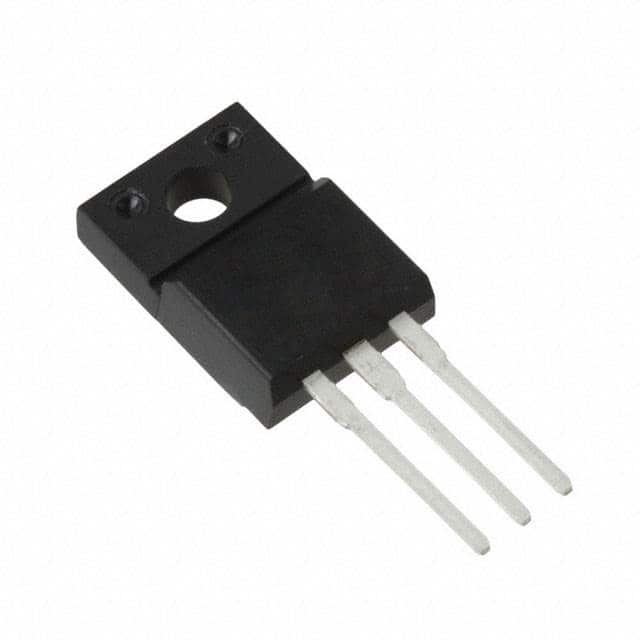Viz Specifikace pro podrobnosti o produktu.

2SD2129,LS4ALPSQ(M) - Product Overview
Basic Information Overview
- Category: Electronic Components
- Use: Power Transistor
- Characteristics: High voltage, high speed switching
- Package: TO-220F
- Essence: Amplification and switching of electronic signals
- Packaging/Quantity: Typically sold in reels or tubes containing multiple units
Specifications
- Voltage: 150V
- Current: 5A
- Power Dissipation: 25W
- Transition Frequency: 30MHz
- Operating Temperature: -55°C to 150°C
Detailed Pin Configuration
- Base (B)
- Collector (C)
- Emitter (E)
Functional Features
- High voltage capability
- Fast switching speed
- Low saturation voltage
Advantages and Disadvantages
Advantages
- Suitable for high power applications
- Fast response time
- Low power dissipation
Disadvantages
- Sensitive to overvoltage conditions
- Requires careful handling during installation
Working Principles
The 2SD2129,LS4ALPSQ(M) operates based on the principles of bipolar junction transistors, utilizing the control of current flow between its three terminals to amplify or switch electronic signals.
Detailed Application Field Plans
This product is commonly used in power supply circuits, audio amplifiers, and electronic switching applications due to its high voltage and fast switching characteristics.
Detailed and Complete Alternative Models
- 2SD882
- 2N3055
- MJL4281A
In conclusion, the 2SD2129,LS4ALPSQ(M) is a versatile power transistor with high voltage capabilities and fast switching speed, making it suitable for various electronic applications requiring efficient signal amplification and switching.
[Word Count: 238]
Seznam 10 běžných otázek a odpovědí souvisejících s aplikací 2SD2129,LS4ALPSQ(M v technických řešeních
What is the 2SD2129 used for?
- The 2SD2129 is a silicon NPN epitaxial planar transistor primarily used for high-speed switching applications.
What are the typical operating conditions for the 2SD2129?
- The typical operating conditions for the 2SD2129 include a collector current of 1A, collector-emitter voltage of 120V, and a power dissipation of 1W.
How can I identify the pin configuration of the 2SD2129?
- The pin configuration of the 2SD2129 is typically identified as the collector (C), base (B), and emitter (E) pins.
What are the key features of LS4ALPSQ(M)?
- LS4ALPSQ(M) is a type of switch commonly used in technical solutions, featuring a compact design, high reliability, and compatibility with various applications.
What is the maximum voltage and current rating for LS4ALPSQ(M)?
- The maximum voltage rating for LS4ALPSQ(M) is typically around 250V, and the maximum current rating is approximately 5A.
How do I integrate 2SD2129 into a circuit for switching applications?
- When integrating 2SD2129 into a circuit for switching applications, it's important to consider proper biasing and drive conditions to ensure efficient and reliable operation.
Can LS4ALPSQ(M) be used for both AC and DC applications?
- Yes, LS4ALPSQ(M) can be used for both AC and DC applications due to its versatile design and compatibility with different types of electrical signals.
What are the typical temperature ranges for the 2SD2129 and LS4ALPSQ(M)?
- The typical operating temperature range for 2SD2129 is -55°C to 150°C, while LS4ALPSQ(M) typically operates within a range of -40°C to 85°C.
Are there any specific precautions to consider when using 2SD2129 and LS4ALPSQ(M) in technical solutions?
- It's important to ensure proper heat dissipation for 2SD2129 and adhere to recommended operating conditions for LS4ALPSQ(M) to maintain performance and reliability.
Where can I find detailed datasheets and application notes for 2SD2129 and LS4ALPSQ(M)?
- Detailed datasheets and application notes for 2SD2129 and LS4ALPSQ(M) can typically be found on the manufacturer's website or through authorized distributors.

